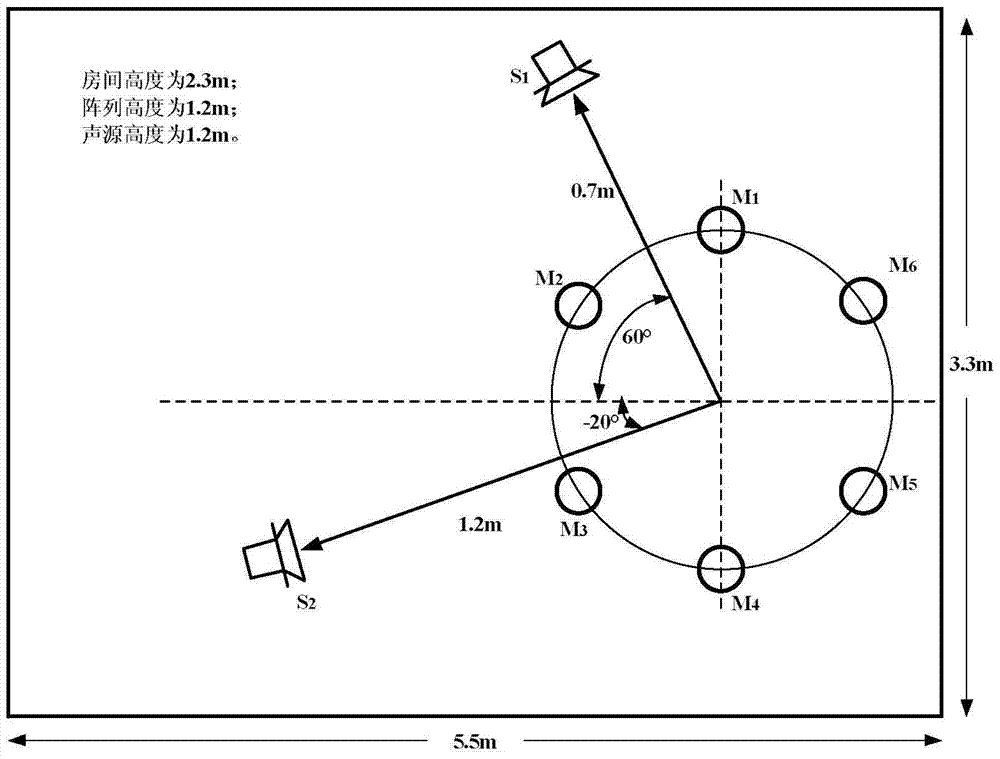A Method of Dual Sound Source Localization Based on Uniformly Focused Transform Least Squares Method
A technology of least squares and focus transformation, applied in positioning, measuring devices, instruments, etc., can solve the problems of affecting the microphone, blurred positioning, low positioning accuracy, etc., to improve accuracy and stability, high positioning accuracy and stability. strong effect
- Summary
- Abstract
- Description
- Claims
- Application Information
AI Technical Summary
Problems solved by technology
Method used
Image
Examples
Embodiment Construction
[0051] Below in conjunction with accompanying drawing, technical scheme of the present invention is described in further detail:
[0052] The flow process of the inventive method sees figure 1 , the present invention is a microphone array dual sound source localization method based on uniform focus transformation least squares method, utilizes six-element microphone array, combines speech signal characteristic to carry out sound source localization, and its specific implementation steps are as follows:
[0053] Step 1: Establish a circular microphone array model;
[0054] Create a circular microphone array model, such as figure 2 As shown, it consists of M identical microphones arranged at equal intervals, the radius of the array is R, and M array elements rotate around to form a circular array. Here, it is stipulated that if and only if i≡j(mod M) (mod means The remainder operation in mathematics), the i-th microphone and the j-th microphone are the same microphone. The s...
PUM
 Login to View More
Login to View More Abstract
Description
Claims
Application Information
 Login to View More
Login to View More - R&D Engineer
- R&D Manager
- IP Professional
- Industry Leading Data Capabilities
- Powerful AI technology
- Patent DNA Extraction
Browse by: Latest US Patents, China's latest patents, Technical Efficacy Thesaurus, Application Domain, Technology Topic, Popular Technical Reports.
© 2024 PatSnap. All rights reserved.Legal|Privacy policy|Modern Slavery Act Transparency Statement|Sitemap|About US| Contact US: help@patsnap.com










